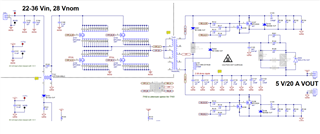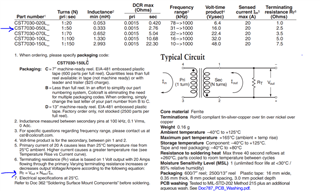Other Parts Discussed in Thread: TPS7H5001-SP
Tool/software:
Hi!
1) for T101 how was it sized with R102=0.3 ohm
R102 = V43*Nsec(50)/I21
how was R102 sized ?
R101 = VCS_ILIM(1.05)/I21
how was R101 sized ?
2) why SW is not connected to GND ?
when D102 unpopulated, how would the diode be connected to LC filter ?
Vout=2*Vin*Nsec/Npri*d
is this rule valid ?




